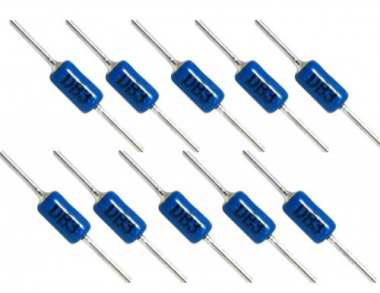
In the vast realm of electronic components, the Diacs Trigger Diode (DIAC) stands out as a small yet powerful gem, often utilized for triggering and control in electronic circuits. This article delves into its definition, characteristics, advantages, applications, and packaging.
I. What is a DIAC?
DIAC, the Diacs Trigger Diode, is a four-layered component composed of two PN junctions, typically manufactured using silicon. Unlike other diodes, DIAC is non-polar, allowing for both forward and reverse connections.
II. Characteristics and Advantages
· Bidirectional Conductance: The DIAC exhibits symmetrical V-I characteristics, enabling precise triggering under both positive and negative voltages.
· Trigger Voltage Range: The trigger voltage typically ranges from 20V to 40V, depending on the model and manufacturer. This provides engineers with flexibility in selecting the appropriate DIAC for different application requirements.
· Precision Triggering: The DIAC can precisely trigger in circuits, facilitating pulse generation, voltage adjustment, and current control, offering high controllability for electronic devices.
III. Application
The DIAC finds extensive application in electronic circuit design, including but not limited to:
· Power Semiconductor Triggering: DIACs are commonly used to trigger power semiconductor devices such as Silicon Controlled Rectifiers (SCR) or Triacs, efficiently controlling electrical power. For instance, the DB3 model can be employed for precise SCR triggering, achieving precise control over high-power electrical devices.
· Dimming Circuits: In lighting systems, DIACs are widely used in dimming circuits, ensuring smooth adjustment of light intensity. The DB4 model, for example, can be utilized to achieve adjustable lighting control, providing a user-friendly lighting experience.
· Pulse Generators: DIACs can generate periodic pulse signals, driving other electronic components for precise timing and triggering control. The ST2 model can be used to construct a precise pulse generator for scientific experiments or timed triggering in communication systems.
· Power Tools and Appliances: In power tools and other electrical appliances, DIACs are used to ensure stable and controllable current, enhancing equipment performance and lifespan. For instance, the DB3 can be applied to control the starting and stopping of motors in power tools, ensuring stable operation within a set range of currents.
IV. Packaging
One common packaging for DIACs is the DO-35, a small glass package with a simple axial pin structure. It features two pins protruding from the glass casing, facilitating insertion and soldering onto circuit boards. The cylindrical shape of DIACs in DO-35 packaging is compact and suitable for space-constrained electronic devices and circuit board designs. This packaging is commonly found in various standard DIAC models, such as DB3 and DB4.
Additionally, DIACs may adopt other packaging forms, such as TO-92 and TO-202, which are typically larger and suitable for applications requiring higher power or current handling capacities. The choice of packaging type depends on specific circuit requirements and application environments.
V. Conclusion
The DIAC provides circuit designers with a powerful tool for achieving precise triggering and control. Demonstrating outstanding performance across various applications, the DIAC is gradually becoming an indispensable part of the electronic world.




